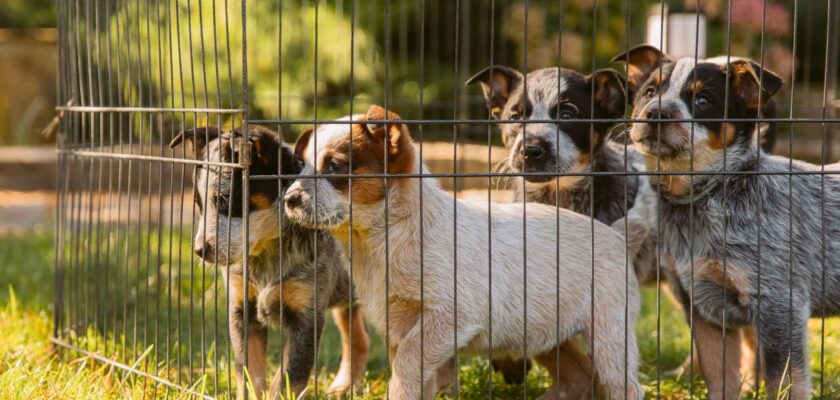Understanding the GPS Dog Fence
A GPS dog fence employs Global Positioning System technology to create a virtual perimeter around a designated safe area. This system involves a GPS-enabled device, usually a collar, that communicates with a network of satellites to establish precise boundaries and monitor the location of your dog in real time. If your dog approaches the edge of the designated area, the system alerts them through corrections like an audible beep, vibration, or other training cues to discourage them from moving further.
How Does a GPS Dog Fence Work?
The setup of a GPS dog fence involves several key components:
GPS Collar: The pet wears a collar that contains a GPS receiver and correction mechanisms.
Control Interface: The pet owner sets up the boundaries through a smartphone app or a computer. These boundaries can be easily adjusted as needed, making the system highly adaptable to different environments.
Communication System: The collar communicates continuously with GPS satellites to track the precise location of your dog. When your dog nears the boundary, the collar receives a signal and reacts based on the settings configured by the owner.
Key Benefits of Using a GPS Dog Fence
1. Flexibility and Portability: Unlike physical fences, a GPS dog fence can be used anywhere. Whether you’re at home, on vacation, or moving to a new location, you can set up the fence quickly and easily.
2. Cost-Effective: Installing traditional fencing, especially over large areas, can be expensive and restrictive. A GPS dog fence requires minimal physical infrastructure, reducing installation costs and landscape alterations.
3. Enhanced Safety: GPS dog fences reduce the risk of pets escaping from your property, getting lost, or encountering dangerous traffic situations. By keeping your pets within predefined boundaries, their safety is significantly enhanced.
4. Wide Coverage: GPS dog fences are ideal for large properties where traditional fencing is impractical. They can cover vast areas, providing ample space for your dog to exercise and explore safely.
5. Minimal Maintenance: Once set up, GPS dog fences require little maintenance compared to physical fences that may suffer from wear and tear or environmental damage.
Implementing a GPS Dog Fence: Best Practices
Training Your Dog: Proper training is crucial for the effectiveness of a GPS dog fence. Gradually introduce your dog to the system, using positive reinforcement to help them understand the boundaries. Start with the mildest correction settings to ensure a humane and stress-free adaptation process.
Choosing the Right System: Consider factors such as the size of the area, the battery life of the device, and the specific needs of your pet when selecting a GPS dog fence. Systems vary in range, durability, and features, so it’s important to find one that best fits your requirements.
Regular Updates and Checks: Regularly update the software associated with your GPS dog fence to ensure you are using the most accurate and efficient technology. Additionally, check the collar and system regularly to ensure everything is functioning properly.
Ethical Considerations and Pet Safety
While a GPS dog fence is highly effective, it’s important to use such systems ethically. Ensure that the corrections used are humane and appropriate for your pet’s temperament and size. Avoid over-reliance on the fence alone for pet safety; supervision and regular interaction are still important for your pet’s well-being and social development.
Conclusion
The GPS dog fence represents a significant advancement in pet management and safety. By combining the precision of GPS technology with the flexibility of virtual boundaries, it offers a sophisticated solution that goes beyond traditional fencing methods. For pet owners looking for a reliable, efficient, and humane way to safeguard their pets, a GPS dog fence is an excellent investment. This technology not only secures your pet but also enriches their quality of life by providing the freedom they need to thrive.
Promotional article
Similar Posts:
- How to Stop a Dog From Digging? What Is the Reason Behind Dog Digging?
- How Much Does It Cost to Microchip a Dog? Pet Microchipping Cost
- Pet Euthanasia: How Much Does It Cost to Put a Dog Down? Check If Euthanizing a Dog Is Expensive
- How Much Does It Cost to Put a Cat Down? Cost of Pet Euthanasia. What Does It Mean to Euthanize a Dog or a Cat?
- Teaching Your Dog: How to Leash Train a Dog & Loose Leash Puppy Training
- The Differences Between a Stray and Feral Cat. Caring for Feral Cats
- How Much Does It Cost to Clone a Dog or a Cat? Cloning Your Dog – Cost, Techniques, Controversies
- Puppy health and wellness: expert advice for nurturing your puppy’s physical and mental well being

